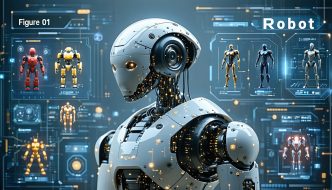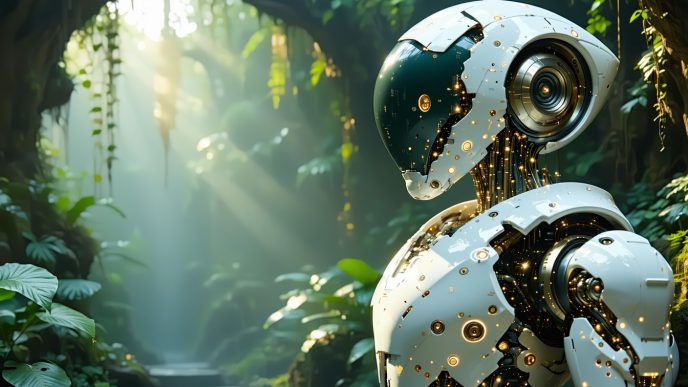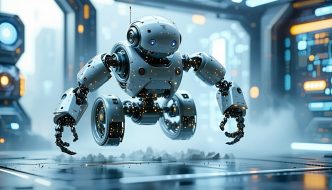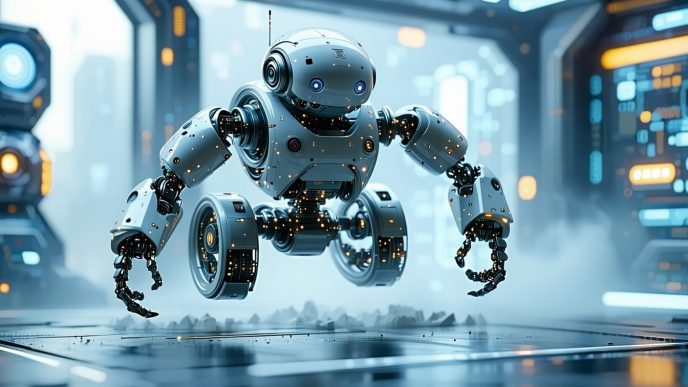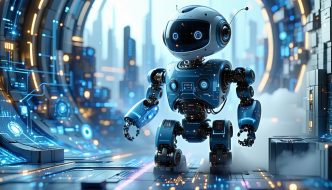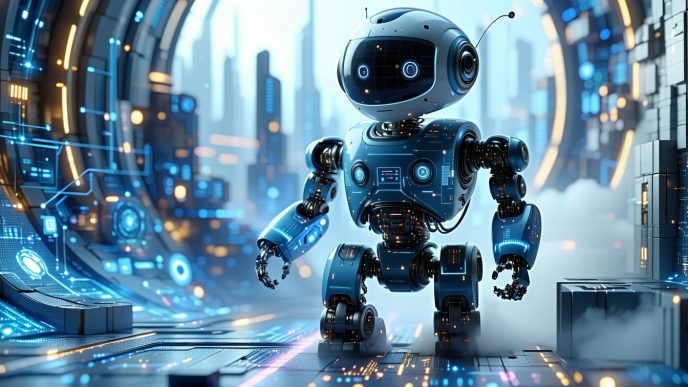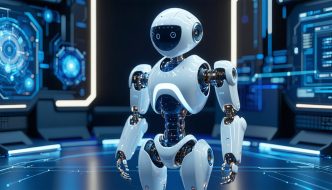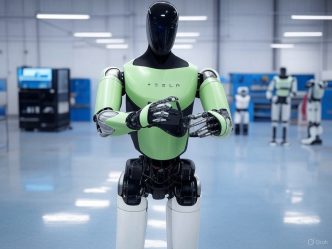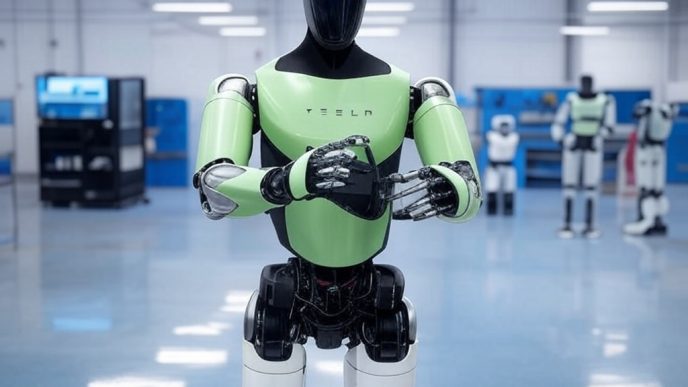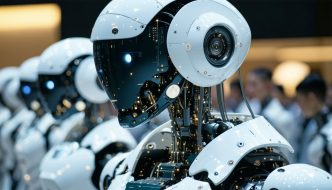Introduction to Humanoid Robots
Humanoid robots are designed to mimic human appearance and behavior, often equipped with advanced technologies to interact with humans and navigate environments effectively.
What are Humanoid Robots?
Humanoid robots are machines that resemble humans in shape and function. They typically have a head, arms, legs, and a torso, allowing them to engage in tasks that humans perform. These robots can vary in complexity, from simple robotics that can perform basic movements to advanced systems capable of performing intricate tasks.
The purpose of humanoid robots is to serve in various roles where human-like interaction is beneficial. This can include assistance in homes, healthcare facilities, educational settings, and more.
Types of Humanoid Robots
Humanoid robots can be categorized based on their intended use and design capabilities. Here are some common types:
| Type of Humanoid Robot | Description |
|---|---|
| Service Robots | Designed for tasks like cleaning, cooking, and assistance in daily chores. Check out humanoid robots for home use. |
| Social Robots | Focused on engaging with people in a social context, often used in customer service and companionship roles. Examples include humanoid robots in elder care and humanoid robots for companionship. |
| Educational Robots | Crafted for teaching purposes, these robots can assist in classrooms or provide learning experiences. Explore more about humanoid robots for education. |
| Industrial Robots | Engineered for manufacturing and logistics, these robots often work alongside human workers in settings such as factories. Learn about humanoid robots in logistics. |
| Research and Experimental Robots | Developed for research purposes to study robot behavior and interaction in various settings, such as the tesla optimus robot and sanctuary ai phoenix. |
Understanding the diverse types of humanoid robots helps in recognizing their roles and potential impact on various sectors. As technology advances, the capabilities and applications of these robots continue to expand, leading to innovations that could reshape industries and everyday life.
General Purpose Humanoids
General purpose humanoids, such as the Figure 01 robot, are designed to perform a variety of tasks and adapt to different environments. Their functionality and versatility make them ideal for numerous applications across various industries.
Functionality and Versatility
The Figure 01 robot is engineered to handle diverse operations, making it suitable for both simple and complex tasks. This adaptability is one of the hallmark features of general purpose humanoids. Here are some key functional aspects:
| Functionality | Description |
|---|---|
| Task Automation | Can automate repetitive tasks to enhance efficiency. |
| Interaction | Capable of engaging with humans through conversation and gestures. |
| Mobility | Designed to navigate various terrains and environments. |
| Learning Ability | Utilizes AI to improve performance and adopt new skills over time. |
This wide range of functionalities enables general purpose humanoids to fit seamlessly into numerous settings.
Applications in Various Industries
The applications of the Figure 01 robot extend across several sectors, showcasing its versatility. Below are some prominent industries benefiting from humanoid robots:
| Industry | Applications |
|---|---|
| Healthcare | Assisting with patient care, rehabilitation, and administrative tasks. For more on this topic, visit humanoid robots in healthcare. |
| Education | Serving as teaching aids, providing personalized tutoring, or conducting demonstrations. Learn more about this in humanoid robots for education. |
| Household | Performing daily chores and providing companionship. Explore more about this in humanoid robots for daily chores. |
| Security | Monitoring premises and providing real-time surveillance. More details can be found in humanoid robots for security. |
| Logistics | Managing inventory, organizing warehouses, and assisting in transporting items. Insights can be further explored in humanoid robots in logistics. |
The Figure 01 robot exemplifies the future of humanoid robotics, with applications that enhance efficiency and convenience in professional and domestic settings. With advancements in technology, it is expected that more industries will integrate humanoid solutions to streamline operations and improve service delivery.
Key Features of Figure 01 Robot
Understanding the key features of the Figure 01 robot is essential for appreciating its potential capabilities. This section will explore its design, mobility, and sensory functions.
Design and Appearance
The Figure 01 robot boasts a sleek and ergonomic design optimized for human interaction. Its humanoid structure mimics the proportions and features of a human, making it approachable and relatable. The exterior is crafted using lightweight yet durable materials, allowing for both functionality and aesthetic appeal.
| Feature | Description |
|---|---|
| Height | 5.5 feet |
| Weight | 130 pounds |
| Materials | Alloy and polymer composite |
| Color Options | Customizable (various finishes) |
The robot’s appearance is designed to facilitate various applications, from service settings to educational environments, making it versatile in its usage.
Mobility and Dexterity
Mobility is a crucial aspect of the Figure 01 robot. Equipped with advanced locomotion systems, it can navigate through diverse environments with ease. The robot features articulated joints that allow for a high degree of flexibility and movement.
| Movement Capability | Description |
|---|---|
| Walking Speed | 3 mph |
| Degrees of Freedom | 26 joints |
| Jump Height | Up to 1 foot |
| Turning Radius | 2 feet |
The dexterity of the Figure 01 robot enables it to perform intricate tasks, such as picking up objects, opening doors, and interacting with various surfaces. This level of mobility is essential for applications in environments that demand agility and precision.
Sensory Capabilities
The sensory functions integrated into the Figure 01 robot enhance its ability to interact with the environment and respond to human cues. Equipped with multiple sensors, including cameras, microphones, and tactile sensors, it has a remarkable awareness of its surroundings.
| Sensor Type | Functionality |
|---|---|
| Vision Sensors | Object recognition and tracking |
| Audio Sensors | Voice recognition and sound localization |
| Tactile Sensors | Sensation of touch and pressure |
These sensory capabilities facilitate communication and interaction, critical for success in applications such as customer service, healthcare, and personal assistance. The design allows the robot to adapt its actions based on real-time feedback from its environment.
The combination of effective design, superior mobility, and advanced sensory capabilities makes the Figure 01 robot a leading example of modern humanoid robotics. For more insights on similar technologies, consider exploring articles on humanoid robots in healthcare or humanoid robots for daily chores.
Performance and Efficiency
The performance and efficiency of the Figure 01 robot are vital aspects that are closely examined due to their relevance in various applications. Two main factors contribute to this analysis: precision in movements and speed and agility.
Precision in Movements
Precision is a crucial element for humanoid robots, especially for those tasks that require exact movements. The Figure 01 robot is designed with advanced actuators and sensors that allow for fine motor skills and accurate positioning. This capability is essential in sectors like healthcare, where delicate tasks such as picking up small items or assisting patients may arise.
| Feature | Specification |
|---|---|
| Actuator Type | High-precision servos |
| Sensor Type | Multi-axis gyroscopes and accelerometers |
| Maximum Repeatability | ±0.05 mm |
| Range of Motion | Full 360-degree rotation in joints |
The combination of these features enables the robot to perform tasks with a high degree of accuracy, essential for positive outcomes in various environments.
Speed and Agility
Speed and agility are also critical attributes of the Figure 01 robot, enabling it to navigate and perform tasks efficiently. With an optimized locomotion system, this robot can traverse various terrains and adapt its movements based on the environment.
| Performance Metric | Value |
|---|---|
| Maximum Speed | 1.5 m/s |
| Acceleration | 0 to 1 m/s in 1.2 seconds |
| Turning Radius | 0.6 meters |
| Weight Capacity | Up to 5 kg |
Because of its speed and agility, the Figure 01 robot can swiftly respond to dynamic scenarios, making it suitable for environments like warehouses or homes where tasks frequently change.
Understanding the performance and efficiency metrics of the Figure 01 robot illustrates its capabilities in real-world applications. This detailed examination aids potential users in identifying the robot’s suitability for specific tasks, ranging from humanoid robots for home use to humanoid robots in healthcare.
Communication and Interaction Abilities
Humanoid robots, such as the Figure 01 robot, are designed not only to perform physical tasks but also to communicate and interact effectively with humans. This section examines two critical aspects of the Figure 01’s communication abilities: language processing and social interaction skills.
Language Processing
Language processing capabilities enable humanoid robots to understand and respond to human speech. The Figure 01 robot is equipped with advanced natural language processing (NLP) algorithms that allow it to interpret spoken language and generate appropriate responses.
Key components of language processing in humanoid robots include:
| Feature | Description |
|---|---|
| Speech Recognition | Ability to detect and understand spoken words. |
| Natural Language Understanding | Capability to comprehend the context and intent behind the words. |
| Response Generation | Creating meaningful responses based on the user’s input. |
These features facilitate engaging conversations and enable the Figure 01 to assist users in various tasks, from answering questions to providing information in real-time. For more insights into how voice interfaces enhance humanoid interaction, visit our article on voice interfaces in humanoid robots.
Social Interaction Skills
In addition to language processing, the Figure 01 robot is designed to exhibit social interaction skills. This includes body language, facial expressions, and emotional recognition. These capabilities enable the robot to establish more natural and relatable connections with humans.
Elements that contribute to social interaction include:
| Skill | Description |
|---|---|
| Non-Verbal Communication | Use of gestures and expressions to convey emotions and intentions. |
| Emotional Recognition | Ability to detect and interpret human emotions based on facial expressions and tone of voice. |
| Contextual Awareness | Understanding the social situation to react appropriately. |
Such features allow the Figure 01 robot to engage with users effectively in a variety of settings. For example, in elder care or companionship contexts, these skills can significantly enhance user comfort and engagement. To learn more about how humanoid robots are used in caring for the elderly, explore our article on humanoid robots in elder care.
By integrating advanced language processing and social interaction abilities, the Figure 01 robot stands out in its capability to connect with humans in an approachable and insightful manner.
Innovation and Technology
Technological advancements play a critical role in enhancing the capabilities of humanoid robots. The integration of sophisticated artificial intelligence (AI) systems has made robots like the Figure 01 capable of performing complex tasks alongside humans.
Advanced AI Integration
The Figure 01 robot benefits from advanced AI algorithms that facilitate machine learning and natural language processing. These capabilities enable the robot to interact intelligently with users, pick up new tasks, and adapt to various environments. With AI integration, the robot can process sensory data, recognize human emotions, and respond accordingly, enhancing its social interaction skills.
Table 1 below showcases the key AI features that significantly improve the Figure 01 robot’s performance:
| AI Feature | Description |
|---|---|
| Machine Learning | Allows the robot to learn from experiences and improve over time. |
| Natural Language Processing | Enables understanding and processing of human language for effective communication. |
| Emotion Recognition | Helps identify and respond to human emotions through facial and voice analysis. |
| Autonomous Navigation | Enhances mobility and interaction in dynamic environments. |
For more about how AI enhances humanoid capabilities, refer to our article on ai models in humanoid robots.
Future Development Prospects
The future of humanoid robots, including Figure 01, is promising with ongoing research and technological innovation. Potential developments include improved sensory systems, enhanced cognitive functions, and greater agility and stability in movement.
Key future prospects for the Figure 01 robot are outlined in Table 2:
| Future Development Area | Description |
|---|---|
| Sensory Enhancements | Incorporation of advanced sensors for improved perception of surroundings. |
| Enhanced Cognitive Abilities | Development of more sophisticated decision-making processes. |
| Greater Adaptability | Ability to work alongside humans in more diverse environments. |
| Improved Energy Efficiency | Advancements in battery technology for longer operational life. |
Future advancements could open new applications in fields such as healthcare, education, and elder care. For more on how humanoid robots can impact various industries, see our articles on humanoid robots in healthcare and humanoid robots in elder care.
As technology continues to evolve, so too will the roles and functionalities of humanoid robots like Figure 01, making them even more integral in daily life.
Limitations and Challenges
Despite the advancements in humanoid robotics, the Figure 01 robot faces some limitations and challenges that impact its functionality and usability. Two primary areas of concern are power consumption and maintenance requirements.
Power Consumption
Power consumption is a significant consideration when deploying humanoid robots like the Figure 01. These robots often require substantial energy to operate effectively, especially when performing complex tasks or utilizing advanced functionalities. The following table outlines average power consumption metrics for various humanoid robots.
| Robot Type | Average Power Consumption (Watts) |
|---|---|
| Figure 01 Robot | 100 – 300 |
| General Purpose Robots | 50 – 500 |
| Advanced AI Robots | 200 – 800 |
High power consumption can lead to increased operational costs and may require regular charging or a robust power supply. Efficient power management systems are essential to mitigate these challenges. Exploring humanoid robot charging systems can provide insights into improving energy efficiency.
Maintenance and Upkeep
Maintaining humanoid robots requires a dedicated approach to ensure optimal performance and longevity. The Figure 01 robot has moving parts, sensors, and electronics that may need periodic inspections and repairs. Common maintenance tasks include:
- Cleaning of sensors and mechanical parts
- Software updates to enhance performance
- Calibration to ensure precise movements and interactions
The following table summarizes typical maintenance tasks and their frequency for humanoid robots.
| Maintenance Task | Frequency |
|---|---|
| Sensor Cleaning | Bi-weekly |
| Software Updates | Monthly |
| Component Inspection | Quarterly |
| Calibration of Movements | Every six months |
Neglecting these maintenance routines may lead to performance decline or operational failures. Researching humanoid robot maintenance can help owners understand the best practices for upkeep. By addressing power consumption and maintenance issues, the effectiveness of the Figure 01 robot can be significantly enhanced, paving the way for more widespread use in various applications.
Ethical Considerations
Impact on Society
Humanoid robots, such as the Figure 01 robot, have the potential to significantly influence society. Their integration into various sectors may lead to increased efficiency and convenience. However, there are concerns regarding the societal implications of widespread humanoid robot usage.
One major aspect is the potential impact on employment. As humanoid robots take over tasks traditionally performed by humans, there may be a shift in job markets. This could lead to job displacement in industries such as manufacturing, healthcare, and even customer service sectors. The table below outlines some potential job sectors affected by the introduction of humanoid robots.
| Sector | Potential Impact |
|---|---|
| Manufacturing | Increased automation may displace factory jobs. |
| Healthcare | Robots could assist, but may reduce demand for certain roles. |
| Customer Service | Automated services may limit human interaction roles. |
Privacy and Security Concerns
As humanoid robots become more advanced, privacy and security concerns rise. These robots often use sensors and cameras to interact with their environment. While this enhances functionality, it can also lead to potential abuses of data collection. There is a risk that personal information may be captured without consent, raising issues about privacy violations.
Moreover, security threats must be considered. A compromised humanoid robot could serve as a vehicle for cyber-attacks or spying. It’s essential to implement strict security protocols and guidelines to protect sensitive information and ensure safe operation of robots like the Figure 01 robot.
To discuss more regarding the implications of humanoid robots on privacy, refer to our article on humanoid robots and privacy.
